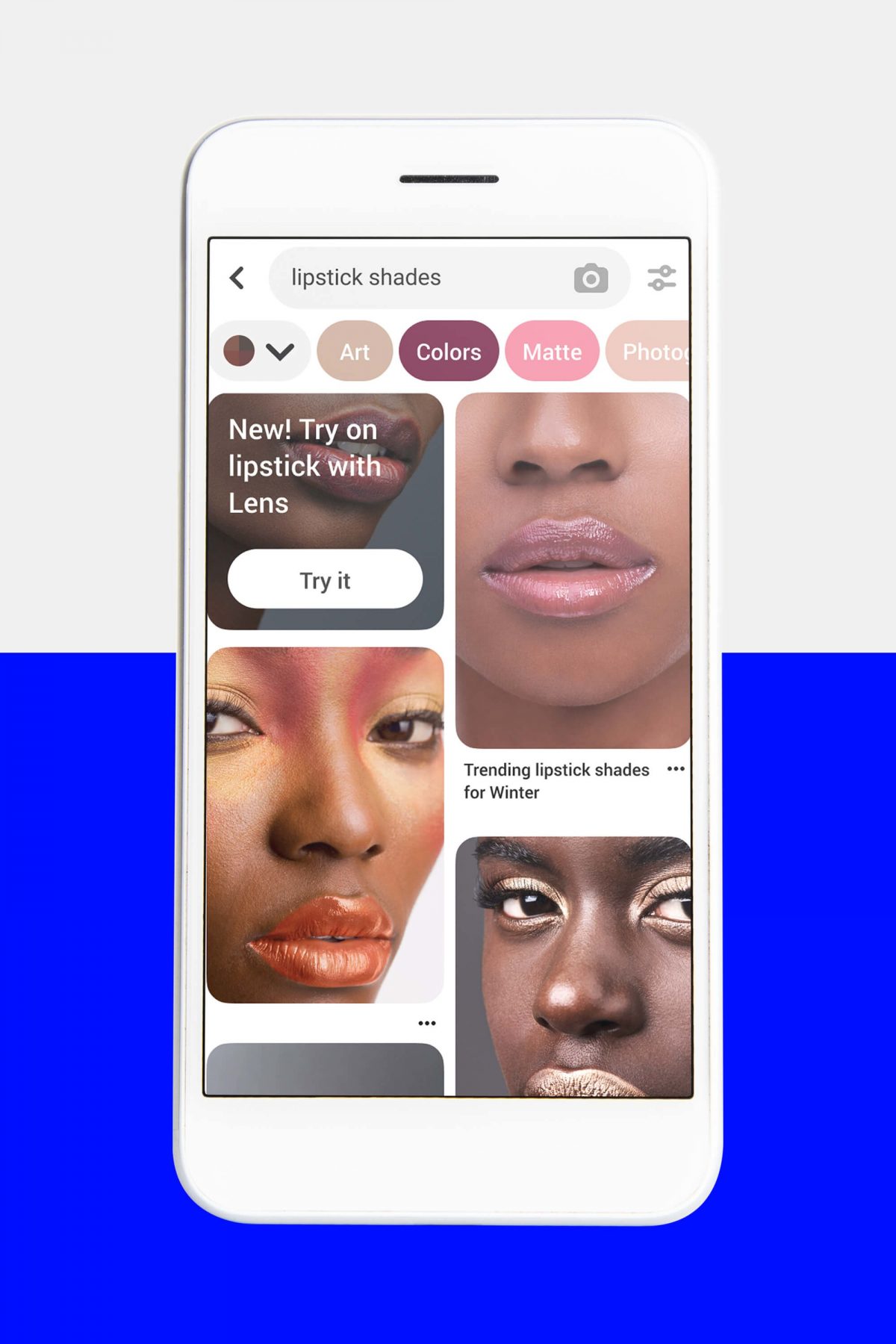-
Pinterest is building out its computer vision technology by adding an AR lipstick try-on that the company hopes will drive purchases.
-
The tool, free and open to all brands, takes advantage of Pinterest’s users who see the platform as a research tool in their purchasing journey.
-
The feature will open up opportunities in other segments, like clothing and furniture, once the technology is up to speed.
SAN FRANCISCO– From Tuesday, Pinterest users in the US will be able to use augmented reality to try on lipstick in the platform’s latest push into e-commerce.
The tool, called “Try On powered by Lens”, uses the selfie camera to show how specific lipsticks will look on a user’s lips, adjusting to their movements in real-time. Users can try on shades from brands including Bare Minerals, Estée Lauder, Sephora, Neutrogena and L’Oréal and then swipe up to shop on the brand’s site.
As Pinterest’s first AR feature, it paves the way for similar applications at a time when AR-enabled commerce is proliferating: an estimated 68.7 million people use AR at least once a month in the US. The technology builds on the platform’s existing computer vision capabilities; its Lens tool, introduced three years ago, powers visual search on Pinterest, which can match items in its catalogue to photos.
Pinterest is playing catch-up in AR to other platforms that have paved the way, like Instagram and Snapchat, which led the adoption of fashion and beauty AR filters. Pinterest’s push into AR aligns with the platform’s overall movement to monetise its estimated 86 million users; according to eMarketer, it surpassed Snapchat’s 83 million users and is now second in size only to Facebook and Instagram.
Pinterest considers its advantage to be its position at the intersection of inspiration and shopping. “Users come when they are actively considering a purchase, but they are undecided — they want to see a range of ideas,” says Jeff Harris, Pinterest’s head of visual search.
Pinterest lets users select a preferred skin tone. and it surfaces products that are similar to the one a user is trying on.

Fifty-two million people in the US search beauty-related content on Pinterest each month, according to the company, representing an opportunity for brands to engage with consumers still in the research stage. Harris says that when AR try-ons are positioned as a practical part of the purchasing journey, it’s important that customers see an accurate representation of how the product would look. So Pinterest decided not to “beautify” the user’s appearance by smoothing skin, adding eyelashes or using other effects that are common with face filters on social media platforms.
“Beautifying is actually doing a disservice because you will buy it, try it on and you won’t see the person you were expecting to see,” says Harris.
To get more AR-enabled try-ons on the platform, the try-on is open to all brands and not tied to an ad product. Brands can add their product catalogues to this tool for free – assuming they have the technical prowess to make AR-enabled versions of their products. (Try On-enabled Pins cannot yet be promoted as ads.) Pinterest will share data with brands on how users are engaging with the tool, such as impressions, clickthrough rates and tries. It’s a different approach to AR than Facebook’s, which only makes its tool available to advertisers.
As Facebook and Instagram have the advantage of scale, offering special features to all brands, rather than just advertisers, is a way for Pinterest to encourage more content, says eMarketer senior analyst Andrew Lipsman.
“Pinterest doesn’t jump into fads. [The company sees] it as an incremental step into what will ultimately be a bigger opportunity — even if it won’t materialise for the next two to three years,” he says.
According to Harris, Pinterest has been quiet on the AR front because, until now, the realism of the tech wasn’t good enough. Other product try-ons, like clothing or furniture, will only become available once the quality improves. Jewellery try-ons, meanwhile, are closer to being ready, he says.
“We don’t want to do tech demos [only] because the tech is cool and new,” Harris says.
https://www.voguebusiness.com/technology/pinterest-ar-lipstick-try-on

